Skin Tag On Lips: A Comprehensive Guide
The ultimate guide to understanding symptoms, causes, treatment, and preventive tips for skin tag on lips.
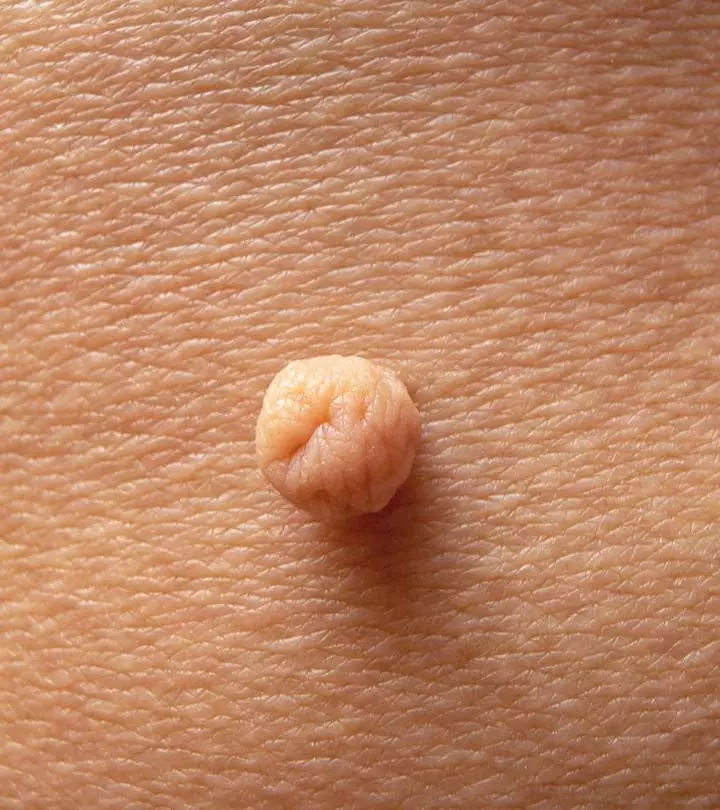
Image: Shutterstock
How do you know that the growth on your lips is a skin tag and not a wart or a mole? Skin tags are small, benign growths that can be easily found in any part of your body. While your lips may not be the most common place for skin tags to grow, it is not unheard of. If looking at your skin tag every day makes you feel annoyed, then don’t worry. This article provides a comprehensive guide to what causes skin tags on lips and the different ways to get rid of them.
In This Article
What Is A Skin Tag?
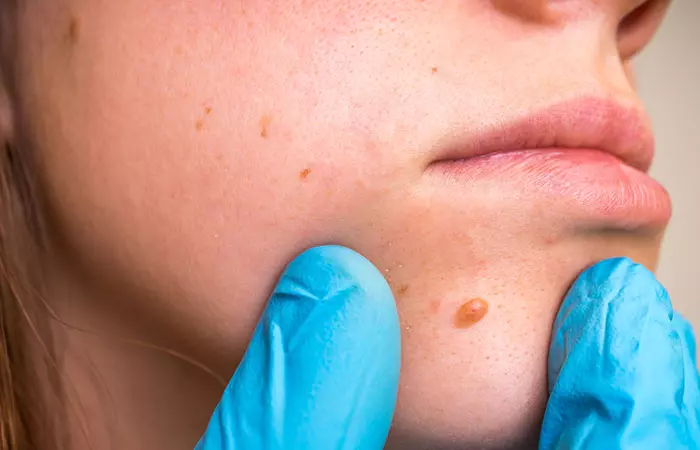
Skin tags are soft, small, non-cancerous growths connected to the skin by a thin stalk called a peduncle. Most commonly seen in individuals after the age of 50, it is estimated that 50% to 60% of adults develop these skin tags once in their lifetime (1). Also known as acrochordons, these growths on your lips are either skin-colored or red in color. This skin protrusion is a type of skin lesion. It may be a form of benign tumor, so make sure you get it checked out by a dermatology expert. While skin tags can appear anywhere on your body, they commonly develop in places where your skin experiences friction. Places such as your armpits, eyelids, groin, and neck are where you will often see skin tags. Although not uncommon, skin tags may develop on your lips as well. Therefore, understanding the causes of skin tags is crucial for effective and correct treatment, especially on lips.
A report showed that skin tags, also known as acrochordons, are common in the general population, with an incidence of 50 to 60%. They occur equally in males and females. As individuals age, the size and number of skin tags may increase. By the fifth to sixth decade of life, around 2/3rds of people may have acrochordons that typically persist throughout their lifespan.
While the exact cause of skin tags is unknown, let us delve deeper into possible factors that contribute to the growth of skin tags on your lips.
Key Takeaways
- Skin tags on the lips can develop due to HPV, insulin resistance, hormone imbalances, and high LDL cholesterol levels.
- Cryosurgery, cauterization, surgical excision, laser therapy, and ligation are some surgical methods that can be used to remove skin tags from your lips.
- Pat your lips dry after stepping out of the shower and apply medicated lip balm to minimize friction and the formation of skin tags.
What Are The Causes Of Skin Tag On Lips?

The following are factors that may cause the development of skin tag on your lips.
- Human Papillomavirus (HPV) – Did you know that HPV may play a role in the development of skin tags? A study was conducted to check the association between HPV and skin tags in patients with skin tags. The results indicated the presence of the HPV DNA in 48% of the patients (2).
 Quick Tip
Quick Tip- Insulin Resistance – Insulin resistance is described as the body’s inability to break down glucose in the blood, leading to diabetes. According to a study conducted in 2010, insulin resistance was associated with the development of multiple skin tags (3).
- Hormonal Imbalances – An imbalance in estrogen and androgen levels may increase the risk of developing skin tags. A study was conducted on participants with skin tags to measure the level of estrogen and androgen in their bodies. The researchers found significantly higher levels of estrogen and androgen receptors in patients with skin tags than the control group (4).
- Cholesterol Levels – While more research is needed, studies suggest that high levels of total cholesterol and LDL cholesterol have been associated with the development of skin tags (5).
Are Skin Tags Contagious?
No, skin tags are not contagious. They may be confused with warts, as both present similarly, but they are not caused by viral or bacterial infections, unlike some warts. While the precise cause for their appearance is not fully understood, they are benign, small, soft growths that often appear in areas where the skin creases or rubs against itself. Age and genetics also seem to be factors in their formation. Skin tags are typically painless, although they can occasionally become irritated or uncomfortable, especially if they are in an area that experiences intense friction. Nevertheless, they do not pose any risk of spreading to others through direct contact.
If what’s on your lips are not skin tags, it could be any one of these skin growths or skin conditions.
Other Growths On Lips Similar To Skin Tags
The following are types of skin bumps you can confuse with skin tags:
- Filiform Warts – Highly infectious, filiform warts are long, narrow growths that project directly from the skin. Caused by the HPV virus, these growths are commonly found on the eyelids, neck, and lips. While a filiform wart goes away on its own, there are surgical procedures that remove this skin abnormality.
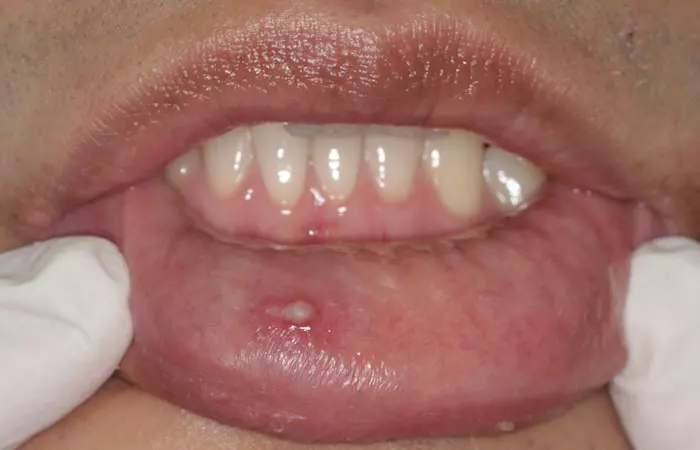
- Mollusca – Caused by the Mollusca contagiosum virus, mollusca are small, shiny growths often found on the lips. What separates them from skin tags is a dent or a dimple in the middle. Mollusca is transmitted either through skin-to-skin contact or contact with an infected surface.
- Mucous Cyst – If you have a growth inside your lip, chances are you have a mucous cyst. Also known as mucocele, these growths can develop due to constant biting or injury to your lip (6).
If you are unsure about the growth on your lip being a skin tag, it is recommended that you consult a doctor.
When To See A Doctor
Skin tags are painless and may go away on their own. But if the skin tag keeps getting caught on your clothes or looking at it causes you distress, you can visit your doctor. Since skin tags rarely grow on the lips, it can be indicative of a mucous cyst or a filiform wart. After doing a physical examination and a biopsy, your doctor will prescribe the right treatment for you.
Depending on their size, let’s explore the different ways you can get rid of the skin tags on your lips.
How To Get Rid Of Skin Tags On Lips
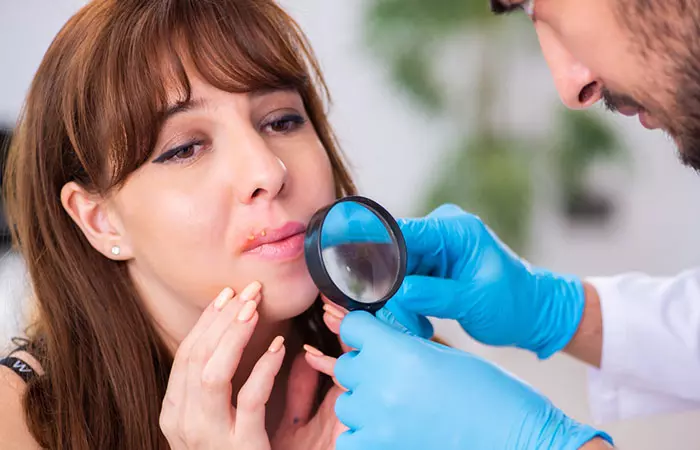
Doctors usually opt for the total removal of the skin tag as the best way to get rid of them. The skin tags on your lips can be removed using the following surgical procedures.
- Cryosurgery – Cryosurgery is considered one of the most effective methods in removing skin tags (7). This is a procedure where liquid nitrogen is used to freeze the skin growth and destroy it.
The effectiveness of the Pixie® Skin Tag cryogenic pen as a home therapy for benign skin tags was compared to a commercially available comparator device in a 2021 study that was published in Dermatology and Therapy. This graph from the same compares the Wortie® skin tag remover and the experimental device Pixie® Skin Tag to show the percentage of complete healing of skin tags after each treatment. The experimental device, according to the study, performed noticeably better and dramatically lessened the appearance of skin tags by 64.3%.

The Percentage Of Complete Healing Of Skin Tags Per Treatment
Source: AURA3: Hair loss Did You Know?
Did You Know?- Cauterization – Cauterization is a medical technique in which chemicals or electrical currents are used to burn off the skin tag.
- Surgical Excision – Also known as shaving excision, this is a procedure that involves the complete surgical removal of skin growths. The surgeon applies a topical cream to numb the surgical area and proceeds with a sharp razor to cut off the growth. After the excision, your surgeon may cauterize the surgical site to close the wound and stop bleeding.
- Laser Therapy – In this procedure, local anesthesia is applied to the growth and a thin laser beam of carbon dioxide is used to remove the skin tag.
- Ligation – This is a procedure where the surgeon uses a surgical thread to cut off the blood circulation of the skin tag, allowing the skin tag to fall off.
It is strongly recommended that you do not remove the skin tags at home and instead consult a medical professional. In the next section, we will explore if you can prevent the development of skin tags.
How To Prevent Skin Tags On Lips

While complete prevention of skin tags is not possible, you can follow this simple tip to reduce the risk of developing them. Pat dry your lips after a shower and apply medicated lip balm to help reduce friction and the development of skin tags.
Infographic: Causes Of Skin Tags On The Lips And Ways To Eliminate Them
Skin tags are small, non-cancerous growth on the skin that develops in places where the skin experiences friction. It can also occur on the lips due to various reasons. The infographic below summarizes the causes of these unwanted growths on the lips and popular ways to eliminate them. Take a look.

Illustration: StyleCraze Design Team
Skin tags are soft, innocuous growths that frequently appear in areas susceptible to the most friction. The presence of a stalk termed a peduncle distinguishes skin tags from moles and warts. Although there is no way to avoid skin tags totally, you can try to reduce the amount of friction on your lips. Skin tags on your lips, while benign and harmless, may cause you discomfort. In such cases, you can seek treatment to get rid of them. It is strongly advised that you should not attempt to remove skin tags at home and instead seek medical advice.
Frequently Asked Questions
Can I remove skin tags at home?
Yes, it is possible to remove skin tags at home by using over-the-counter removal cream, skin tag removal bands and patches, or freezing kits. However, there can be potential risks associated with the same. Hence, it’s best suggested to get a skin tag removed by a doctor in a medical setting.
What should I do if a skin tag bleeds?
If your skin tag bleeds, immediately contact a healthcare professional to seek medical help.
How does tea tree oil remove skin tags on lips?
Anecdotal evidence suggests that tea tree oil helps remove skin tags on lips by drying them out so that they fall off. However, there is no scientific evidence to back these claims.
Does apple cider vinegar remove skin tags on lips?
No, there is no evidence to suggest that apple cider vinegar can help remove skin tags. On the contrary, frequent or overuse of improperly diluted ACV may damage skin due to its acidic nature.
Can I cut off a skin tag on my lips with nail clippers?
Surgical excision involves cutting off skin tags with sharp razors. However, cutting off a skin tag at home with nail clippers may damage the skin, cause bleeding, and increase the risk of infection. If you must do it, ensure that you are applying the technique on a very small skin tag and that the tools are properly sanitized. However, it is advisable to seek medical guidance to remove skin tags or consult them before applying such a technique on your own.
Can baking soda get rid of skin tags on lips?
Anecdotal evidence suggests that regular application of baking soda may dry out skin tags and shrink them over time. However there is no scientific evidence to support the safety or efficacy of baking soda use as a remedy for skin tags.
Is aloe vera good for skin tags on lips?
Aloe vera is beneficial for skin health. However, there is no scientific evidence to suggest that aloe vera can help get rid of skin tags.
Learn how to get rid of skin tags and warts with easy-to-follow skin tag removal tips in the video below! Get rid of those pesky skin tags and warts quickly and easily.
References
Articles on StyleCraze are backed by verified information from peer-reviewed and academic research papers, reputed organizations, research institutions, and medical associations to ensure accuracy and relevance. Read our editorial policy to learn more.
- Skin Tags
https://www.ncbi.nlm.nih.gov/books/NBK547724/ - Human papillomavirus and skin tags: is there any association?
https://pubmed.ncbi.nlm.nih.gov/18583787/ - Role of insulin-like growth factor-1 in skin tags: a clinical genetic and immunohistochemical study in a sample of Egyptian patients
https://www.ncbi.nlm.nih.gov/labs/pmc/articles/PMC6503204/ - A STUDY OF ANDROGEN AND ESTROGEN RECEPTORS α β IN SKIN TAGS
https://www.ncbi.nlm.nih.gov/labs/pmc/articles/PMC2856367/ - Metabolic Associations with Skin Tags
https://www.researchgate.net/publication/296666477_Metabolic_Associations_with_Skin_Tags - Oral mucocele: Review of literature and a case report
https://www.ncbi.nlm.nih.gov/labs/pmc/articles/PMC4606697/ - Efficacy Evaluation of the Pixie® Skin Tag Cryogenic Device on Skin Tags in a Prospective Single-Blinded Randomized Comparative Clinical Trial
https://link.springer.com/article/10.1007/s13555-021-00532-w
Read full bio of Dr. Sonam Jeswani Ramrakhiani
Read full bio of Eshna Das
Read full bio of Anjali Sayee
Read full bio of Swathi E











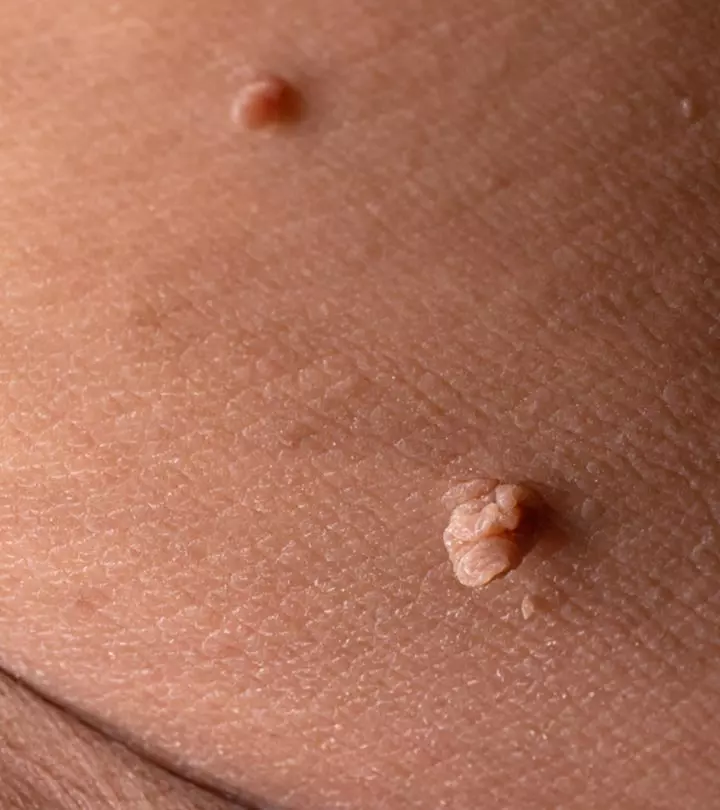

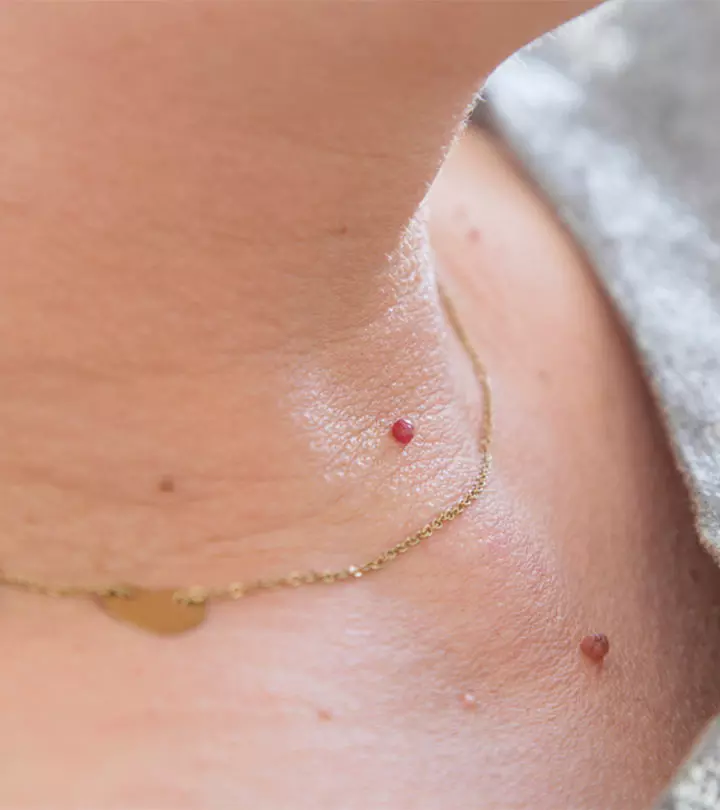
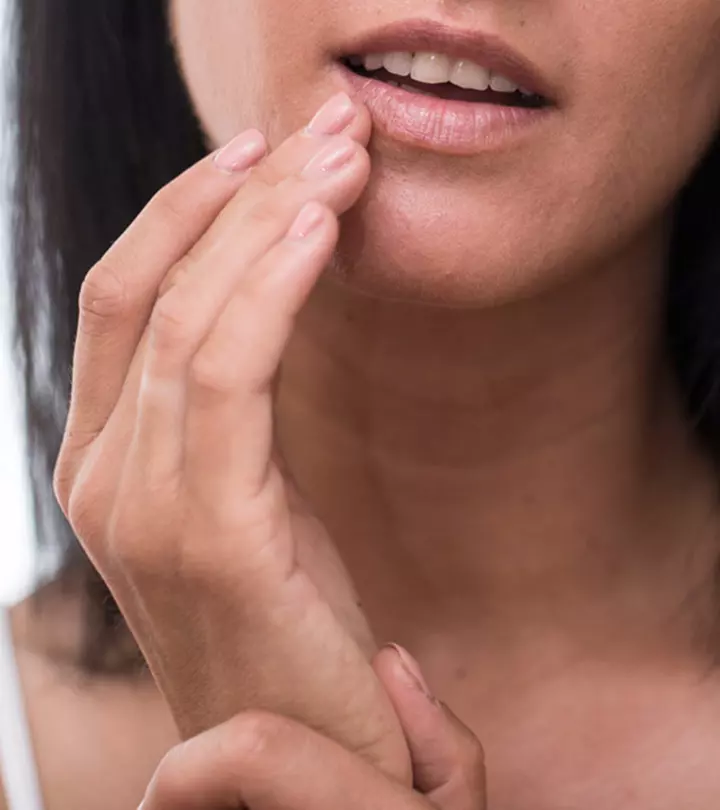


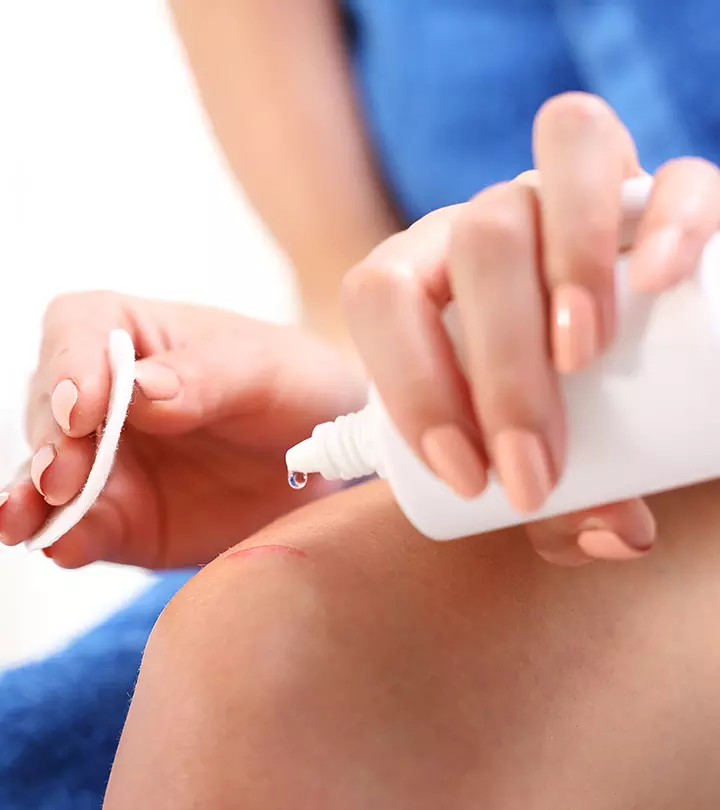









Community Experiences
Join the conversation and become a part of our empowering community! Share your stories, experiences, and insights to connect with other beauty, lifestyle, and health enthusiasts.